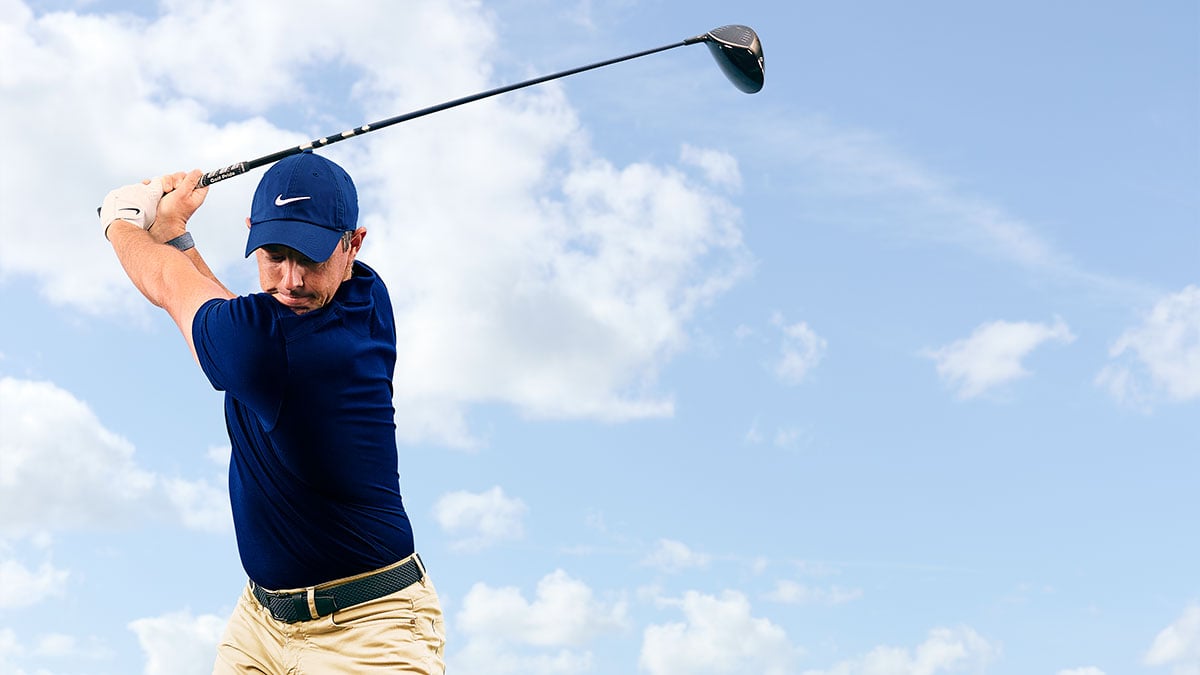Want to know what you can steal from Rory’s swing? There’s more than you might think
Photographs by Mary Beth Koeth
I’ll concede that calling Rory McIlroy’s swing the best in pro golf is subjective, but I’ve been teaching this game for more than 40 years and have seen my share of great swings. For example, Adam Scott’s might be the best looking. Ludvig Aberg gets the nod for efficiency of motion. Russell Henley is so technically sound, he’s probably the straightest hitter out there. Bryson DeChambeau annihilates the ball. All that said, I rank swings this way: would you swap yours for Rory’s? I’m betting you and about 99 percent of tour pros would say, “Yes!”
As McIlroy is playing in his 16th season on the PGA Tour (which is hard to believe!), Golf Digest recently captured fresh photography of his driver swing and contacted me to do an analysis. Instead of focusing on the things he does that are seemingly superhuman, I’m going to highlight the parts of his swing you can copy. You might roll your eyes at the notion of swinging like Rory, but there is a lot to take for your own game. I’ll break down his swing into sections and give you something he does from each that you can work on this season. Let’s get started.
ADDRESS: Feel balanced and stable
Note how he stands to the ball, with his toes flared and knees slightly pinched in [above]. He’s supporting his weight on the inside of his feet and legs – the balanced, stable setup every golfer should begin from. Also, check out the trianglular shape formed by his arms and shoulders. He’s preparing to swing that triangle back as one unit. You should, too. It’s a great start from a synchronicity standpoint. Finally, tee it high like he’s doing here. This promotes the shallow angle of attack into the ball you want to make when swinging a driver. If you were too steep into a ball on a high tee, you’d pop it up.

TAKEAWAY: Shift into your trail side
His lower body stays quiet as he begins the backswing – he doesn’t sway, which is a common mistake. Instead, Rory begins to coil, moving his centre of mass away from the target and putting more weight into his trail leg [above]. To generate power, it’s imperative you get your body behind the ball with a driver. Note how he maintains a touch of flex in his right knee. It takes a little work in the gym on flexibility to copy that, but if you can do it as you take the club back, you’ll be able to coil much more effectively.

HALFWAY BACK: Feel more rounded in your turn
As he starts to hinge his wrists, which takes the club upward, he combines that vertical move with a more rounded rotation of his shoulders [above]. This will get his arms very deep at the top of the backswing. The key for you is to feel less vertical as you take the club back. You’re trying to avoid being in a position where you’re forced to come down steeply on an out-to-in path- – a death move. Make a more rounded turn, where the lead shoulder doesn’t dip much, to put your club on a shallower path from inside the target line.

AT THE TOP: Try to keep your left heel down
Here is one facet of Rory’s swing, and many pros’ swings for that matter, I know many amateurs struggle to copy. Still, it’s worth working on if you’re interested in picking up some distance off the tee. As he reaches the top, his left heel is still planted on the ground [above]. This enables him to really coil his body, increasing the X-factor potential (the differential between his hip turn and shoulder turn) that really boosts power. It’s fine if your heel comes off the ground – I don’t expect you’d be as mobile as Rory – but the longer you can keep it down, the more power you can generate and store for your downswing.
Rory is in position at the top of this swing to hammer the golf ball.

COMING DOWN: Push into the turf for leverage
You have to initiate the downswing from the ground up. The first move in the forward swing is a push against the turf with the knees. The left knee is also moving towards the target, which you can see in Rory’s swing here [above]. Biomechanists will say the pelvis moves first, but it’s the knees that light the fuse, so to speak. Rory is pushing hard, a huge power generator. To get a feel for this move, make some practice swings stopping when you reach the halfway-down position here. Your right shoulder should feel held back and your lower body active and partially unwound. Your feet, knees and hips lead the way, and your upper body, including your arms and the club, trail. Don’t worry, they will catch up in a blink of an eye down around impact.

THROUGH IMPACT: Release fully; don’t hold anything back
There’s a lot to appreciate in this photo of Rory rocketing the ball off his club [above]. Look how much his torso is behind the impact, which means he’s applied the mass of his body to it. Further catapulting the club into the ball, look at his left leg. After his knee moved laterally towards the target early in the downswing, it’s now pulling back. This abrupt reversal of direction shoots all of his energy into his arms and clubhead for a full release. OK, a lot of this might seem too tough to copy.
Without a lot of practice, I agree. However, you can do three things fairly easily. The first is to stay behind the ball with your upper body as you strike it. The second is to fully release the club. There should be no holding back whatsoever. The final thing is to hit up on the ball. If you work on just that, the first two things should come naturally.


FOLLOW THROUGH: Finish tall and unwound
I’ve always said that Rory has the greatest finish in the game. It’s so indicative of all the good things that happened before it. He’s so stable, you’d have a tough time pushing him off balance when he completes his swing [above right]. In addition to swinging at a speed that allows you to finish without falling off balance, you can copy Rory’s ability to extend his arms and club in the follow through and let everything release fully [above left]. Think about ending your swings with your right shoulder high and forward, your hands and arms behind your head and the shaft lying on your shoulders. It’s not violent. Your swing should be smooth and steady – just like Rory’s.

